As the world grapples with the effects of climate change, the urgency for sustainable energy solutions has never been more critical. Renewable energy, significantly propelled by advances in technology and changing global policies, is quickly becoming a cornerstone of the modern infrastructure landscape. This transformation has ushered in a wave of investment opportunities, primarily focusing on solar, wind, and other green energy sources. Companies such as Greenbacker are leading the charge in this renewable revolution, symbolizing the alignment of economic growth and environmental sustainability. In this blog post, we will explore current market trends in renewable infrastructure, highlight key players like Greenbacker, and discuss the prospects of green energy funding.
The Current Landscape of Renewable Energy Investment
Market Trends
The shift towards renewable energy is not just a trend; it is a rapidly evolving paradigm that is reshaping global energy consumption. Here are some notable trends currently driving the market:
-
Regulatory Support: Governments worldwide are increasingly recognizing the importance of renewable energy for energy security and environmental conservancy. Policies such as tax incentives, subsidies, and renewable portfolio standards are making it easier for investors to dive into green projects. Countries are setting ambitious net-zero goals, intensifying the push towards renewable energy sources.
-
Technological Advancements: The reduction in costs of solar panels, wind turbines, and battery storage technologies has made renewables competitive with fossil fuels. Innovations in energy efficiency and developments in grid technologies further enhance integration and reliability, making renewable projects more viable.
-
Public Sentiment and ESG Factors: Investors are increasingly factoring Environmental, Social, and Governance (ESG) criteria into their decision-making processes. Public sentiment is shifting towards sustainability, driving companies to adopt greener practices. Funds focused on green projects are seeing increased capital inflow, catering to a growing demographic of socially conscious investors.
-
Global Energy Demand Growth: The rising demand for energy, particularly in emerging economies, presents an enormous opportunity for renewable infrastructure. The International Energy Agency (IEA) estimates that global energy demand could grow as much as 30% by 2040, compelling nations to seek sustainable solutions.
- Decentralization of Power Generation: The rise of distributed energy resources (DERs) like rooftop solar and local wind farms is democratizing energy production. Consumers are becoming prosumers, generating their own energy, thus creating new revenue streams and investment opportunities.
A Focus on Major Players: Greenbacker
Among the key companies revolutionizing renewable infrastructure is Greenbacker Renewable Energy Company LLC. Founded in 2015, Greenbacker has become a significant player in the renewable energy investment landscape. The firm specializes in developing, acquiring, and managing sustainable energy projects across the United States.
Key Highlights of Greenbacker:
-
Diversified Portfolio: Greenbacker operates a diverse portfolio of renewable energy assets, including solar, wind, and energy storage projects. As of 2023, it manages over 2,500 megawatts of clean power, placing it among the leaders in the renewable energy market.
-
Focus on Community Engagement: Greenbacker’s commitment to involving local communities in projects enhances acceptance and mitigates the environmental impact in the areas they operate. This focus aligns with broader ESG principles and fosters a sustainable investment model.
- Public Transparency and Investment Opportunities: Greenbacker not only provides a platform for institutional investors but is also opening avenues for retail investors, offering access to previously exclusive markets. Initiatives like their REIT (Real Estate Investment Trust) model enable broader public participation in renewable energy investments.
The Future of Green Energy Funding
The future of renewable energy funding looks promising and is likely to be marked by several key developments:
-
Increased Institutional Investment: With ESG considerations becoming paramount, institutional investors are reallocating portfolios toward sustainable projects. This shift is driving significant capital flow into renewable energy infrastructure, evidenced by commitments exceeding hundreds of billions from private equity firms and pension funds.
-
Emergence of Green Bonds: The green bond market is rapidly expanding, allowing both public and private entities to raise capital for environmentally friendly projects. The growth in green bonds not only fosters funding but also promotes transparency and accountability in environmental impact.
-
Technological Partnerships: The collaboration between tech firms and renewable energy companies will continue to thrive. Innovations in AI, IoT, and blockchain technology can optimize energy management, improve grid stability, and enhance the efficiency of renewable systems.
-
Global Collaboration: Climate change is a global challenge, driving international collaboration in renewable infrastructure development. Multinational partnerships and joint ventures are likely to increase, especially in projects that span various geographic regions or require substantial funding.
- Public and Private Incentives: As the demand for renewable energy grows, governments are likely to introduce more favorable policies and financial structures to incentivize investments. This will include grants, subsidies, and other funding mechanisms that lower the risks associated with renewable projects.
Conclusion: A Sustainable Tomorrow
As we venture deeper into the 21st century, the transition to renewable energy is gaining irreversible momentum. Investment in this sector is no longer viewed merely as a commitment to environmental sustainability; it represents a forward-looking economic opportunity. Companies like Greenbacker exemplify how seriously the energy sector takes this shift and show that profitability and sustainability can align.
The rise of renewable infrastructure is a testament to humanity’s ability to innovate and adapt. With supportive policies, technological advancements, and a commitment from investors to prioritize sustainability, we can look forward to a future where clean energy powers our lives, safeguarding the planet for generations to come. By investing today, we are not just funding projects; we are building tomorrow.


